INTERVAL—O
200 screen-printed papers with thread
50’x 1’
2024
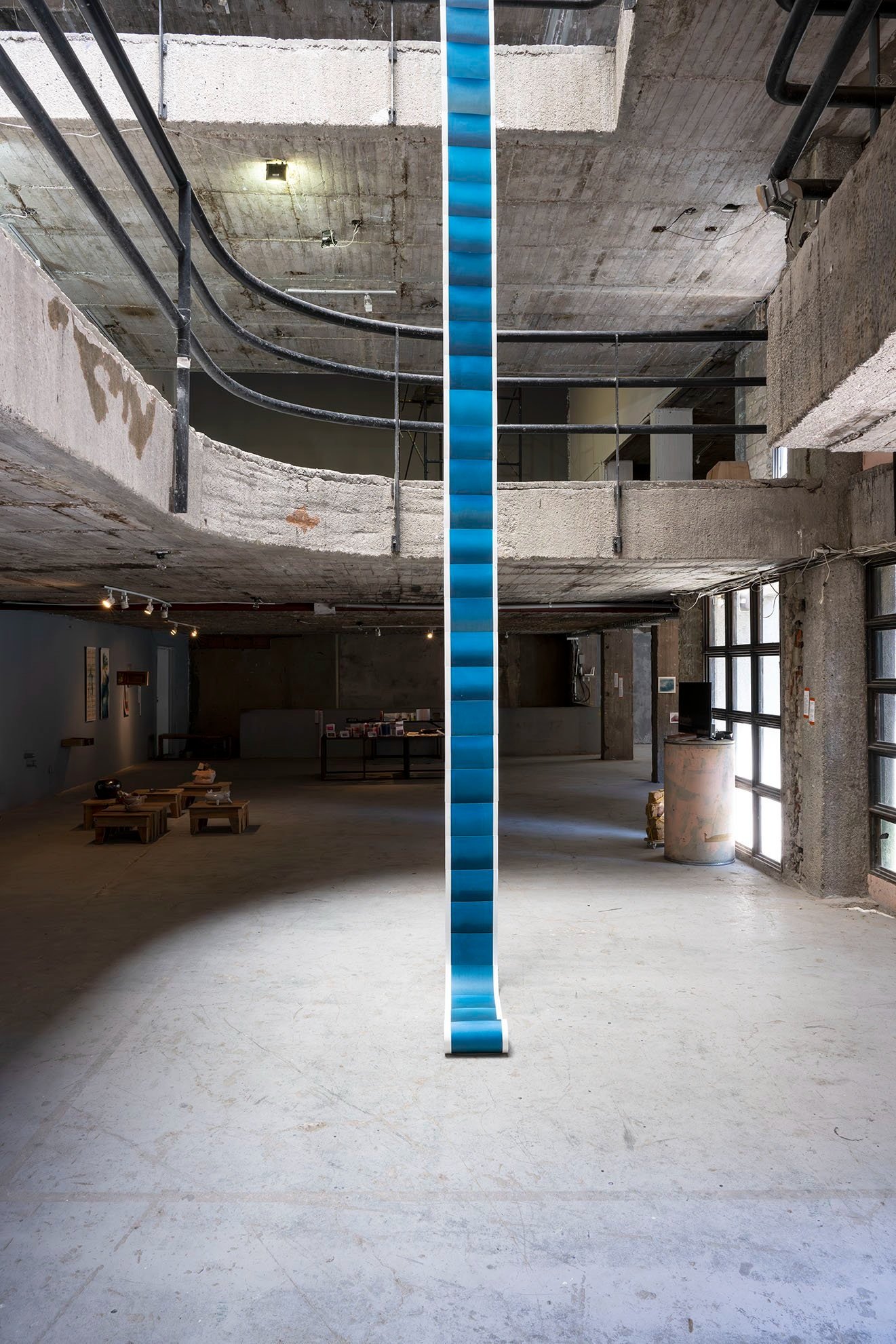
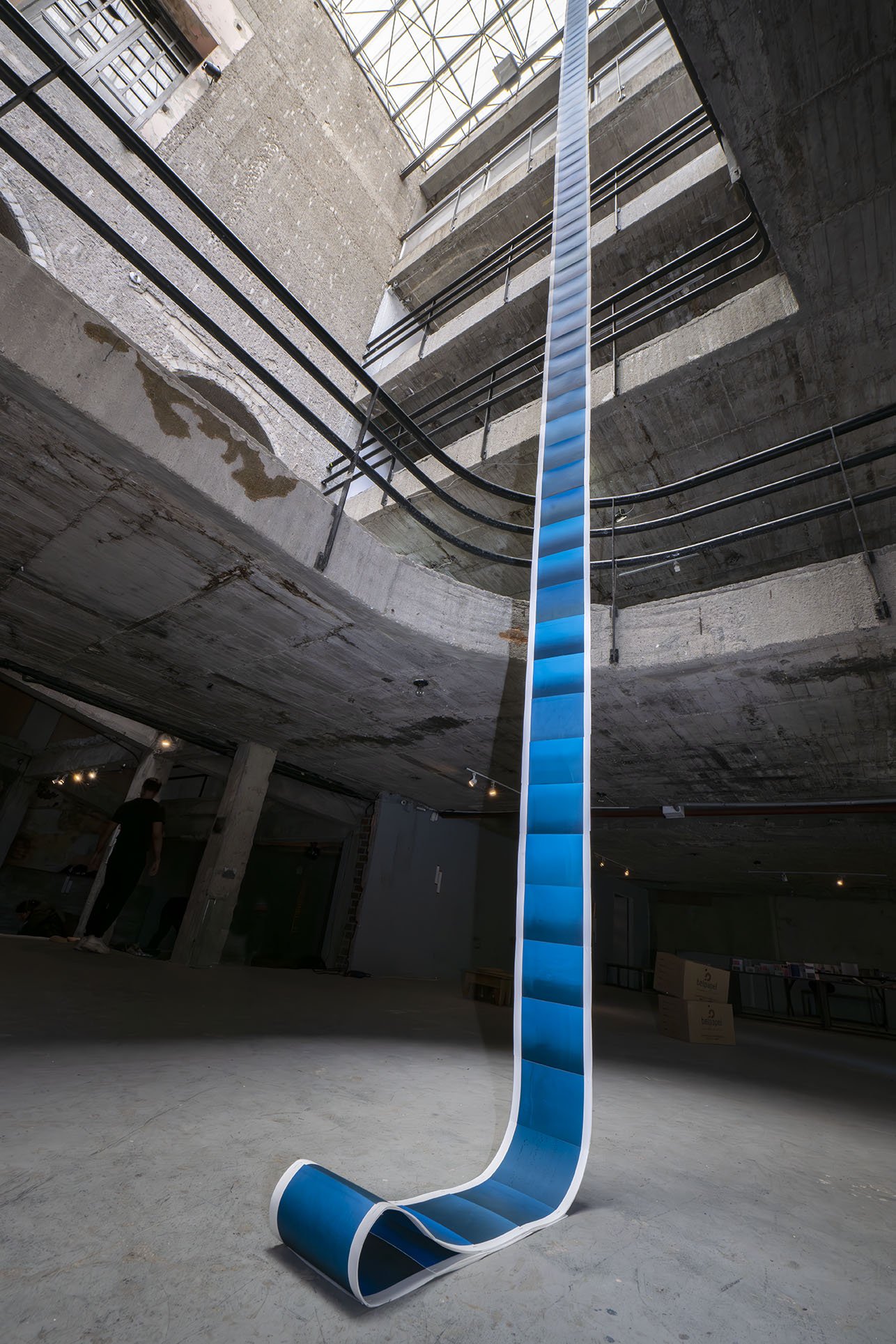

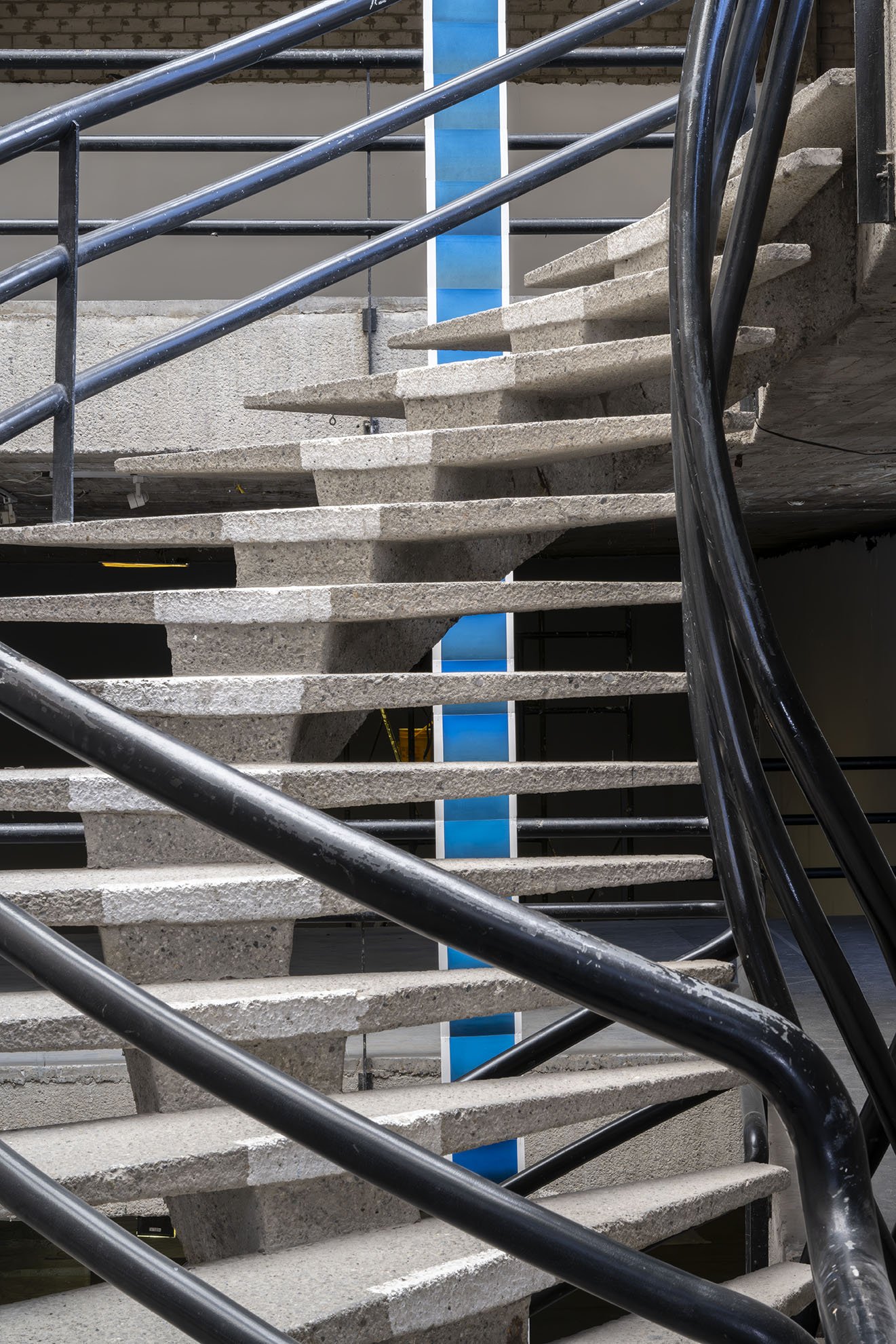
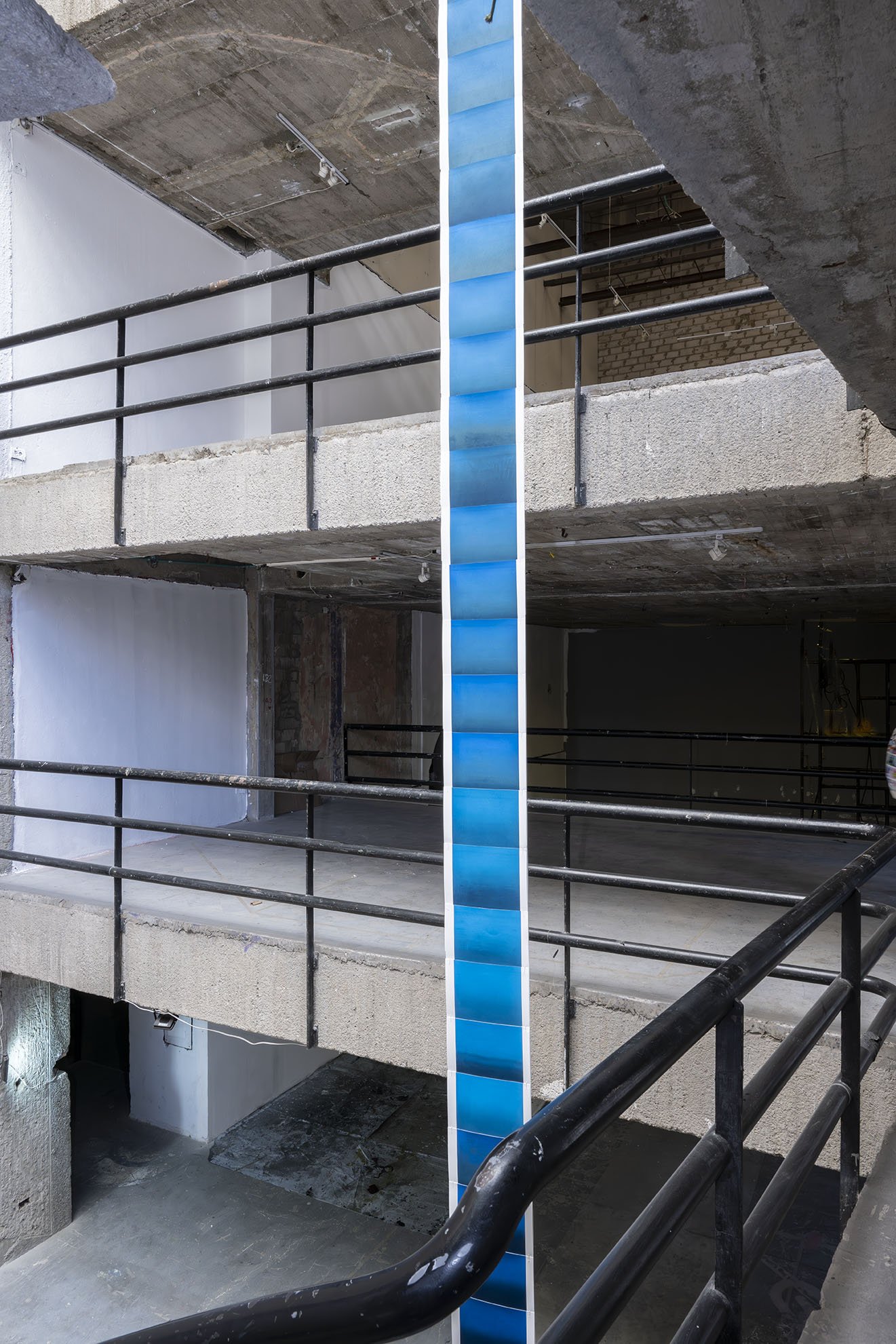
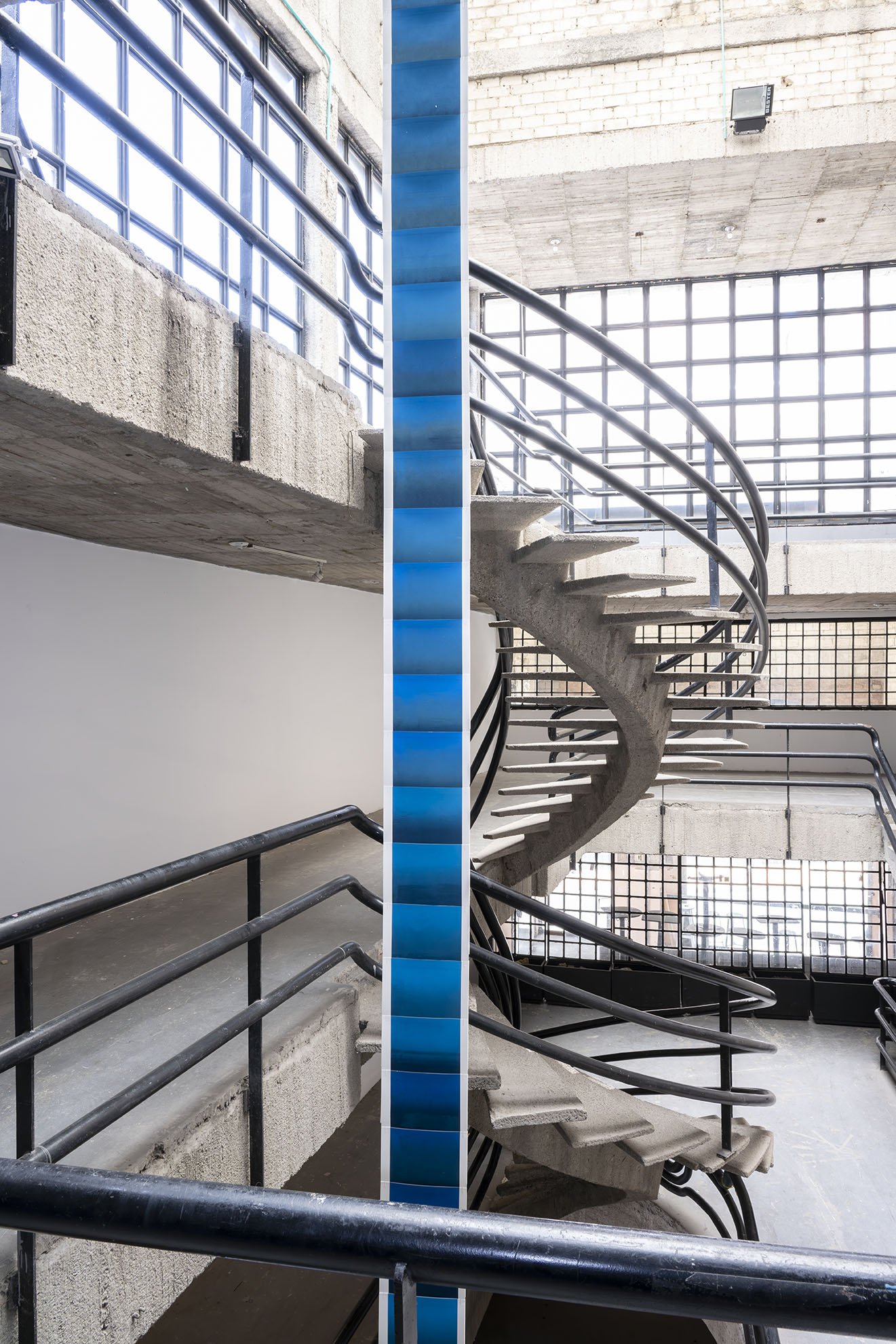
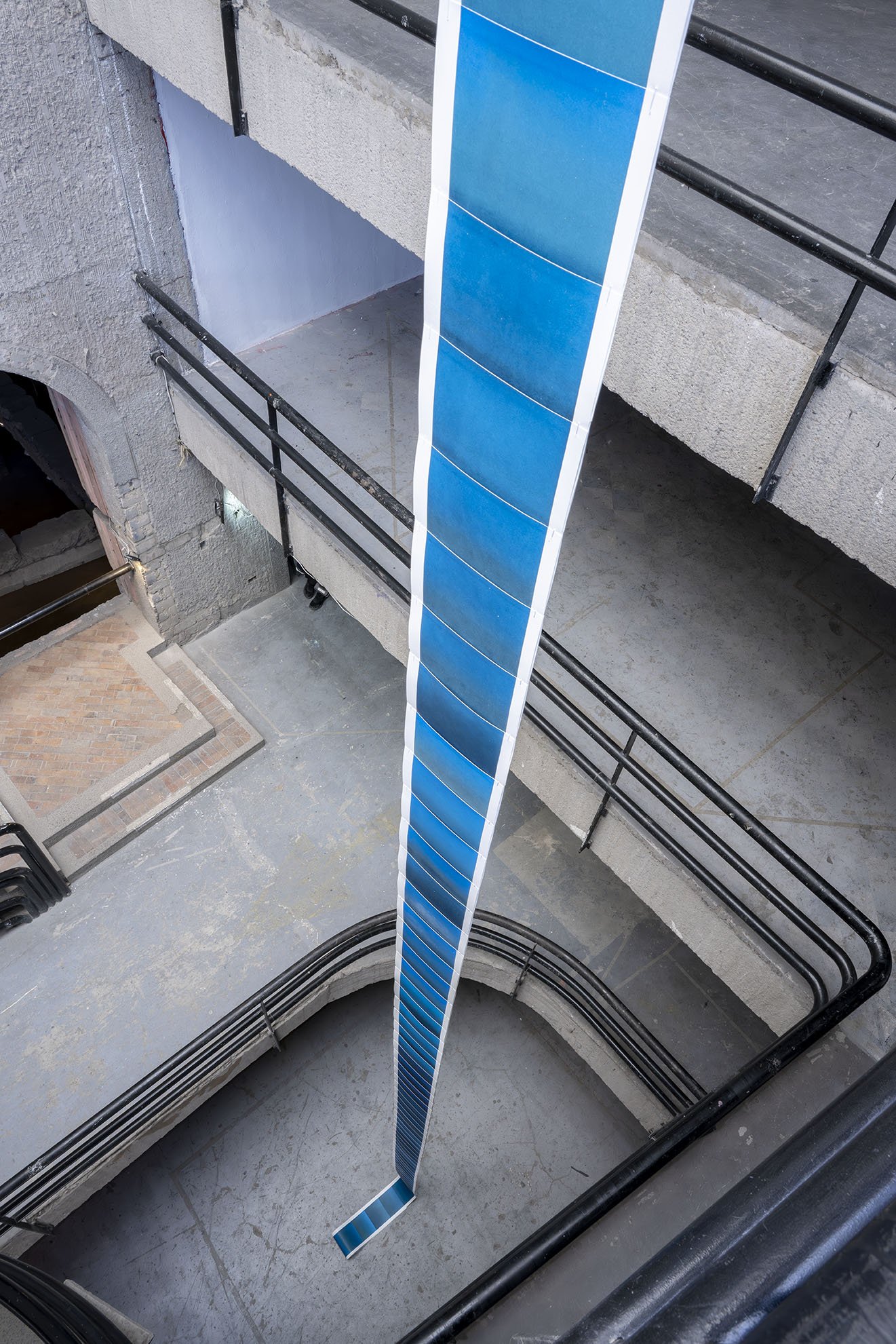
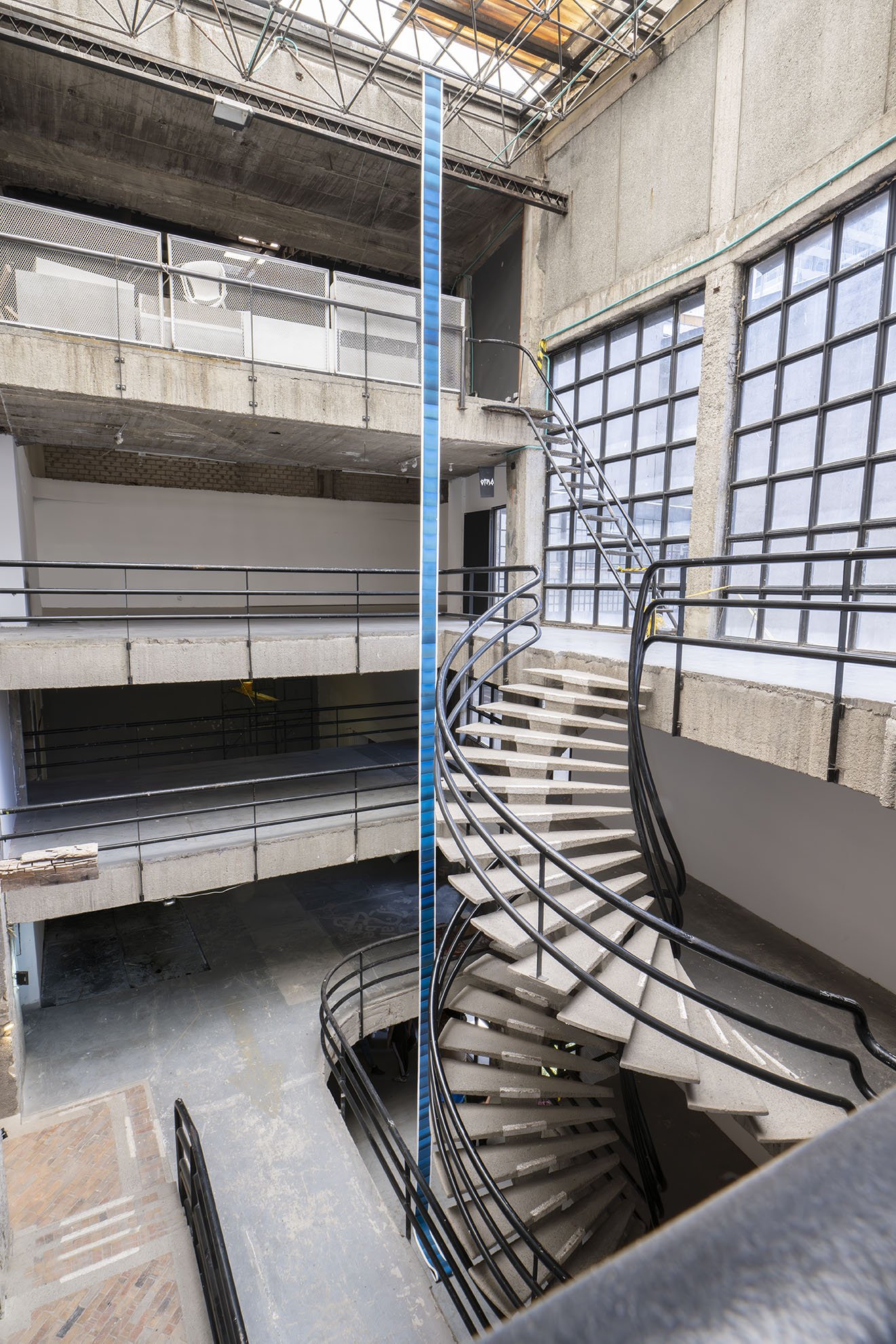
INTERVAL––O
A whirlwind of dirt forms from the pogo dancing in the middle of Simón Bolívar Park, the taste of blood after enduring four hours of training, the obsession with the hidden parts of toilets to ensure they are spotless, leaving for the first time with no return, carrying the cold blood of the mountains, inhabiting the heat and salty air of a land full of cockroaches, wondering when one will return.
REPETITION
Repetition is essential for learning; it is tied to movement. By repeating actions, patterns, and words, we inherit systems and habits that bind the body to routine. However, repetition can also lead to monotony and submission, especially when performed without purpose. In artistic practice, repetition allows us to learn and adapt, but it also opens up the possibility of breaking patterns. For instance, in weaving, even while following a geometric pattern, no stitch is ever truly identical. This subtle variation illustrates how, through repetition, new forms can emerge, breaking uniformity.
INVISIBLE
The invisible, though strong, often goes unnoticed, unrecognized, and unacknowledged. It is something that becomes imperceptible due to its constant presence in daily life, like the hierarchy of what I see and do not see in my routine.
The invisible also encompasses what cannot be touched, even within my own body. Feelings and emotions, although intangible, exist in that space we might call “nothingness,” yet even in nothingness, there is always something. I wonder: is it truly possible for something completely invisible to exist?
The invisible harbors a lack, something that does not receive recognition. Yet, is it possible for the visible—amid language, emotions, and perceptions—to be invisible? I think of Borges' The Aleph, where the entire universe converges in a single point. Is this a metaphor for the invisible, or is there something deeper that I fail to see?
RESISTANCE
Resistance is an act deeply connected to pain, a way of perpetuating the suffering we cling to. I ask myself, what am I truly resisting? What would happen if I stopped resisting? I feel that resistance is defined by the weight of pain, and without that pain, perhaps it would lose its meaning.
To insist is another form of resistance, but I question how necessary that insistence truly is. I see resistance as a collective act, a firm refusal to occupy a place of submission. I refuse to accept subordination. I imagine a form of resistance where pain is not the driving force, but rather the pursuit of relief.
